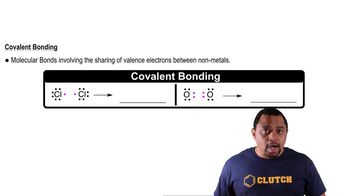Look at the location of elements A, B, C, and D in the following periodic table:
(e) Which of these oxides has the highest melting point? Which has the lowest melting point?
 Verified step by step guidance
Verified step by step guidance



Look at the location of elements A, B, C, and D in the following periodic table:
(e) Which of these oxides has the highest melting point? Which has the lowest melting point?
Consider the six second- and third-row elements in groups 4A–6A of the periodic table:
Possible structures for the binary fluorides of each of these elements in its highest oxidation state are shown below.
(a) Identify the nonfluorine atom in each case, and write the molecular formula of each fluoride.
Consider the six second- and third-row elements in groups 4A–6A of the periodic table:
Possible structures for the binary fluorides of each of these elements in its highest oxidation state are shown below.
(b) Explain why the fluorides of nitrogen and phosphorus have different molecular structures but the fluorides of carbon and silicon have the same molecular structure.
The following pictures represent various silicate anions. Write the formula and charge of each anion.
Which element in each of the following pairs has more nonmetallic character?
(a) Se or Te
Which compound in each of the following pairs is more ionic?
(b) P4O6 or Ga2O3